Yuki Nikaido
MIMII DG: Sound Dataset for Malfunctioning Industrial Machine Investigation and Inspection for Domain Generalization Task
May 27, 2022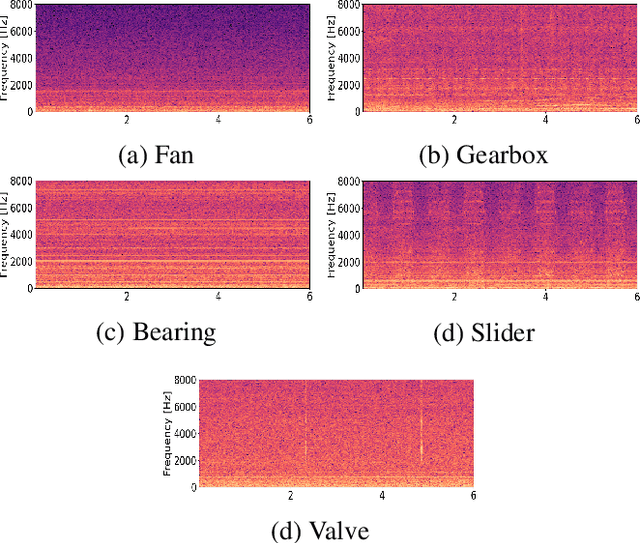

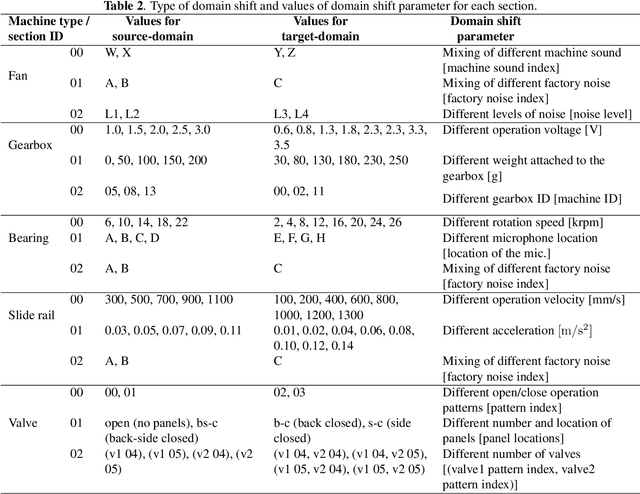
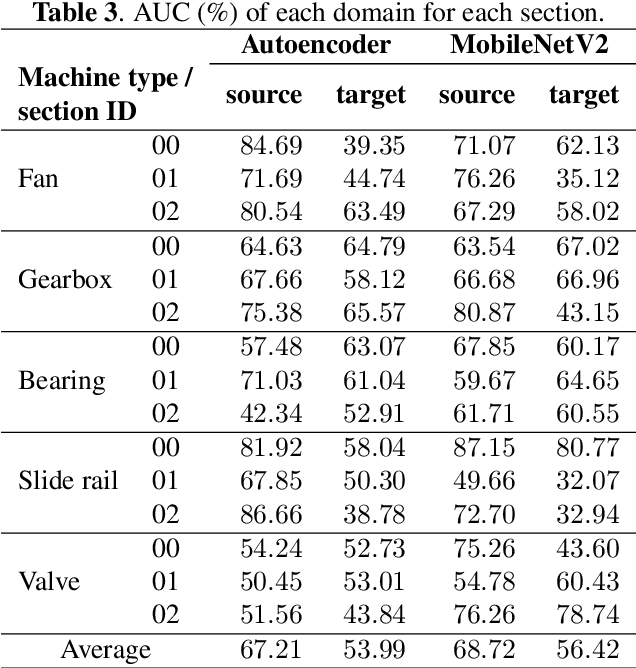
Abstract:We present a machine sound dataset to benchmark domain generalization techniques for anomalous sound detection (ASD). To handle performance degradation caused by domain shifts that are difficult to detect or too frequent to adapt, domain generalization techniques are preferred. However, currently available datasets have difficulties in evaluating these techniques, such as limited number of values for parameters that cause domain shifts (domain shift parameters). In this paper, we present the first ASD dataset for the domain generalization techniques, called MIMII DG. The dataset consists of five machine types and three domain shift scenarios for each machine type. We prepared at least two values for the domain shift parameters in the source domain. Also, we introduced domain shifts that can be difficult to notice. Experimental results using two baseline systems indicate that the dataset reproduces the domain shift scenarios and is useful for benchmarking domain generalization techniques.
MIMII DUE: Sound Dataset for Malfunctioning Industrial Machine Investigation and Inspection with Domain Shifts due to Changes in Operational and Environmental Conditions
May 07, 2021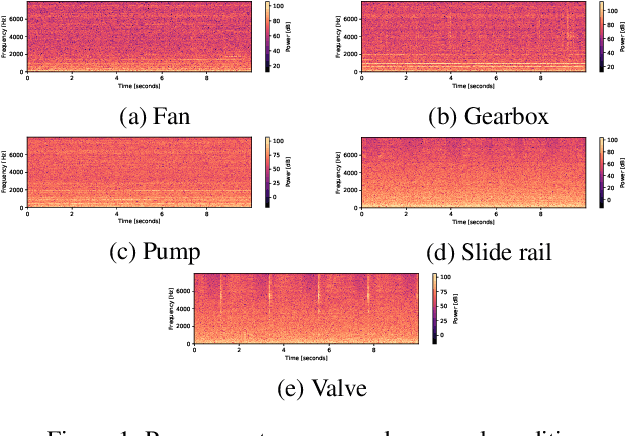
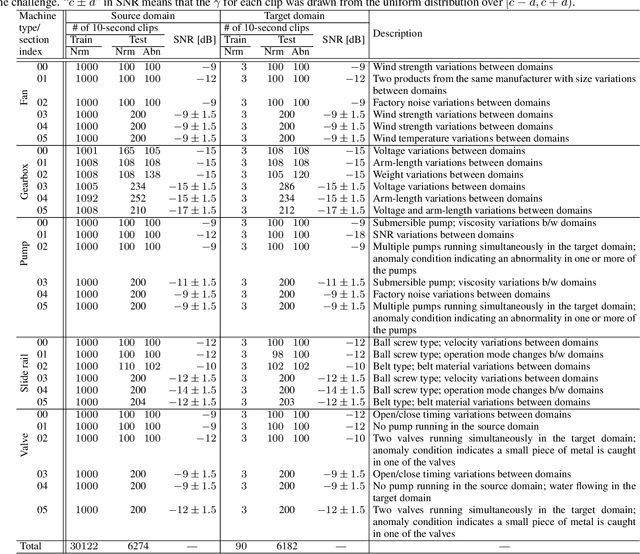
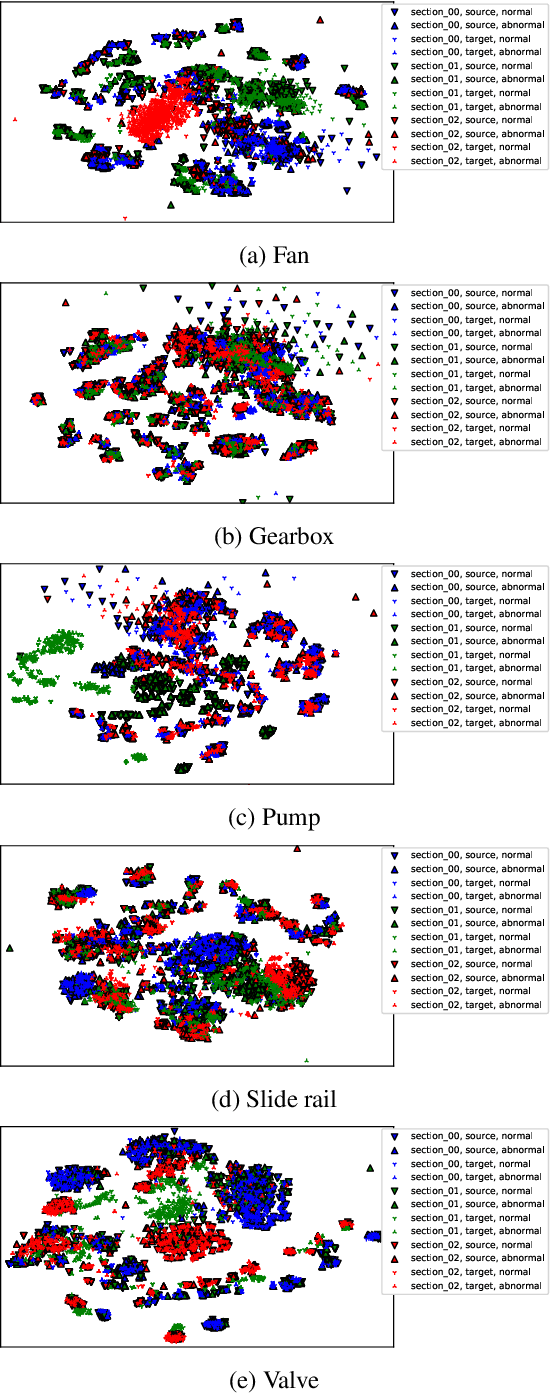

Abstract:In this paper, we introduce a new dataset for malfunctioning industrial machine investigation and inspection with domain shifts due to changes in operational and environmental conditions (MIMII DUE). Conventional methods for anomalous sound detection face challenges in practice because the distribution of features changes between the training and operational phases (called domain shift) due to some real-world factors. To check the robustness against domain shifts, we need a dataset with domain shifts, but such a dataset does not exist so far. The new dataset consists of normal and abnormal operating sounds of industrial machines of five different types under two different operational/environmental conditions (source domain and target domain) independent of normal/abnormal, with domain shifts occurring between the two domains. Experimental results show significant performance differences between the source and target domains, and the dataset contains the domain shifts. These results indicate that the dataset will be helpful to check the robustness against domain shifts. The dataset is a subset of the dataset for DCASE 2021 Challenge Task 2 and freely available for download at https://zenodo.org/record/4740355
Deep Autoencoding GMM-based Unsupervised Anomaly Detection in Acoustic Signals and its Hyper-parameter Optimization
Sep 25, 2020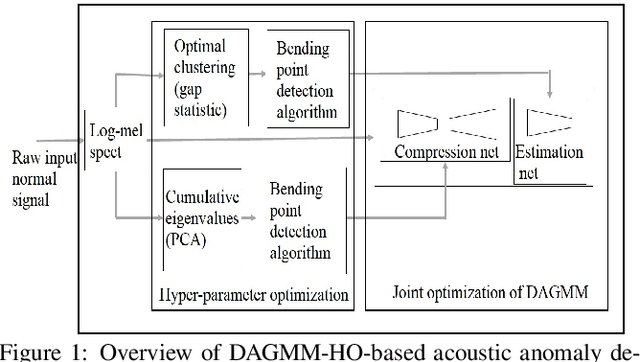

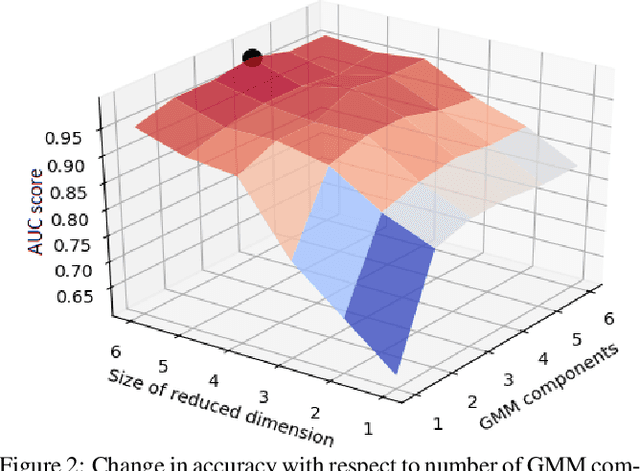
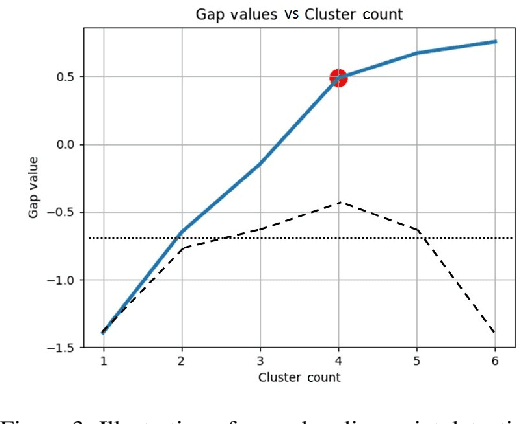
Abstract:Failures or breakdowns in factory machinery can be costly to companies, so there is an increasing demand for automatic machine inspection. Existing approaches to acoustic signal-based unsupervised anomaly detection, such as those using a deep autoencoder (DA) or Gaussian mixture model (GMM), have poor anomaly-detection performance. In this work, we propose a new method based on a deep autoencoding Gaussian mixture model with hyper-parameter optimization (DAGMM-HO). In our method, the DAGMM-HO applies the conventional DAGMM to the audio domain for the first time, with the idea that its total optimization on reduction of dimensions and statistical modelling will improve the anomaly-detection performance. In addition, the DAGMM-HO solves the hyper-parameter sensitivity problem of the conventional DAGMM by performing hyper-parameter optimization based on the gap statistic and the cumulative eigenvalues. Our evaluation of the proposed method with experimental data of the industrial fans showed that it significantly outperforms previous approaches and achieves up to a 20% improvement based on the standard AUC score.
Description and Discussion on DCASE2020 Challenge Task2: Unsupervised Anomalous Sound Detection for Machine Condition Monitoring
Jun 10, 2020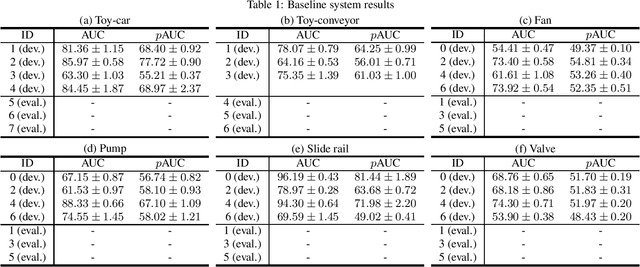
Abstract:This paper presents the details of the DCASE 2020 Challenge Task 2; Unsupervised Detection of Anomalous Sounds for Machine Condition Monitoring. The goal of anomalous sound detection (ASD) is to identify whether the sound emitted from a target machine is normal or anomalous. The main challenge of this task is to detect unknown anomalous sounds under the condition that only normal sound samples have been provided as training data. We have designed a DCASE challenge task which contributes as a starting point and a benchmark of ASD research; the dataset, evaluation metrics, a simple baseline system, and other detailed rules. After the challenge submission deadline, challenge results and analysis of the submissions will be added.
MIMII Dataset: Sound Dataset for Malfunctioning Industrial Machine Investigation and Inspection
Sep 20, 2019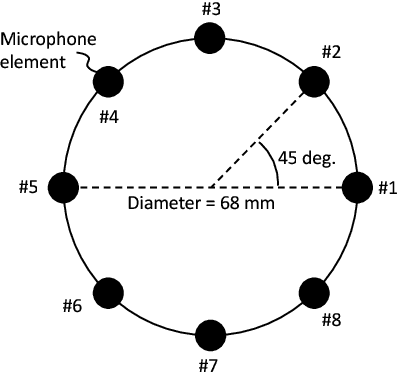
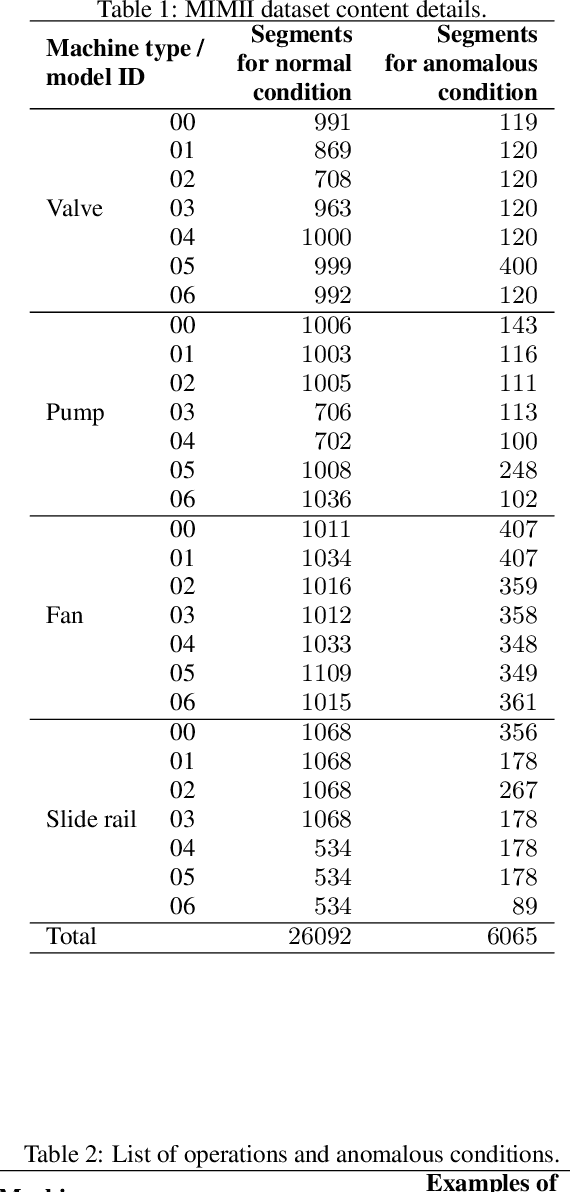
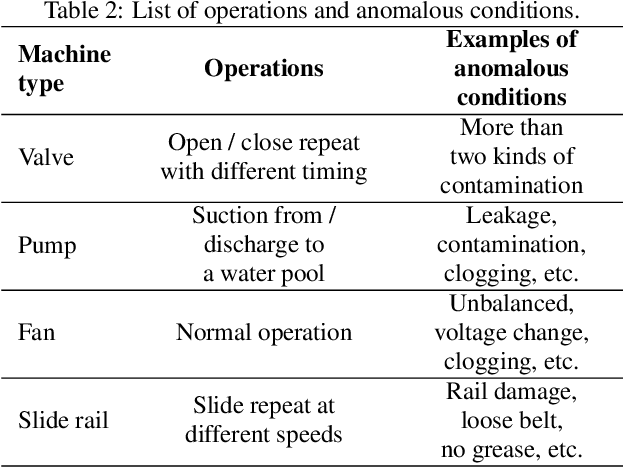
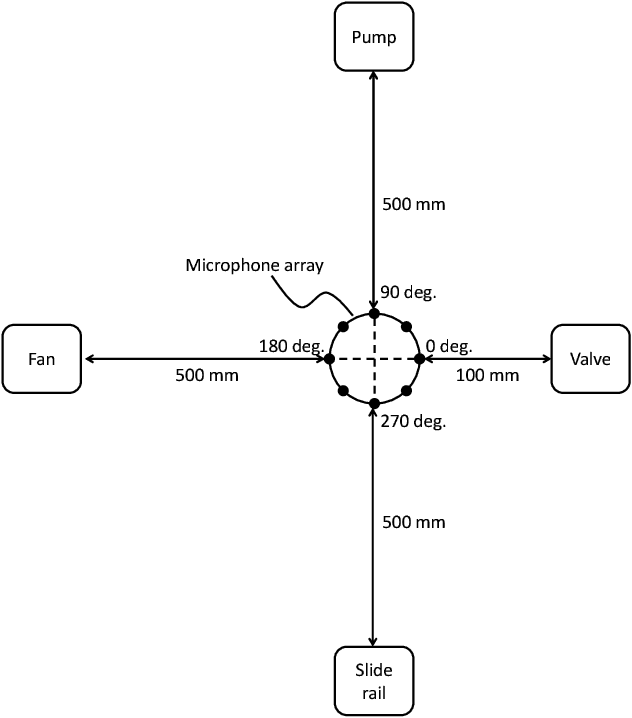
Abstract:Factory machinery is prone to failure or breakdown, resulting in significant expenses for companies. Hence, there is a rising interest in machine monitoring using different sensors including microphones. In the scientific community, the emergence of public datasets has led to advancements in acoustic detection and classification of scenes and events, but there are no public datasets that focus on the sound of industrial machines under normal and anomalous operating conditions in real factory environments. In this paper, we present a new dataset of industrial machine sounds that we call a sound dataset for malfunctioning industrial machine investigation and inspection (MIMII dataset). Normal sounds were recorded for different types of industrial machines (i.e., valves, pumps, fans, and slide rails), and to resemble a real-life scenario, various anomalous sounds were recorded (e.g., contamination, leakage, rotating unbalance, and rail damage). The purpose of releasing the MIMII dataset is to assist the machine-learning and signal-processing community with their development of automated facility maintenance. The MIMII dataset is freely available for download at: https://zenodo.org/record/3384388
 Add to Chrome
Add to Chrome Add to Firefox
Add to Firefox Add to Edge
Add to Edge